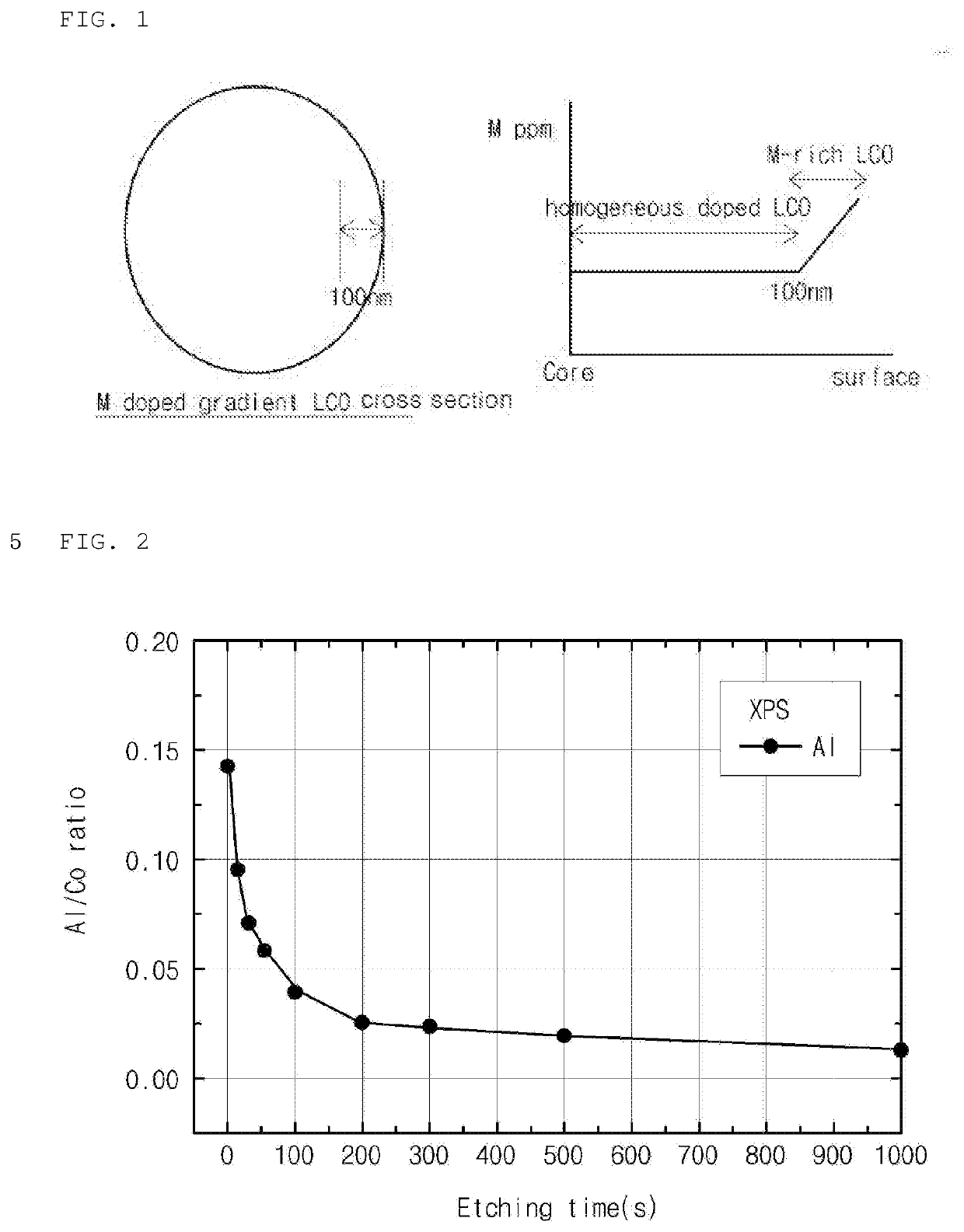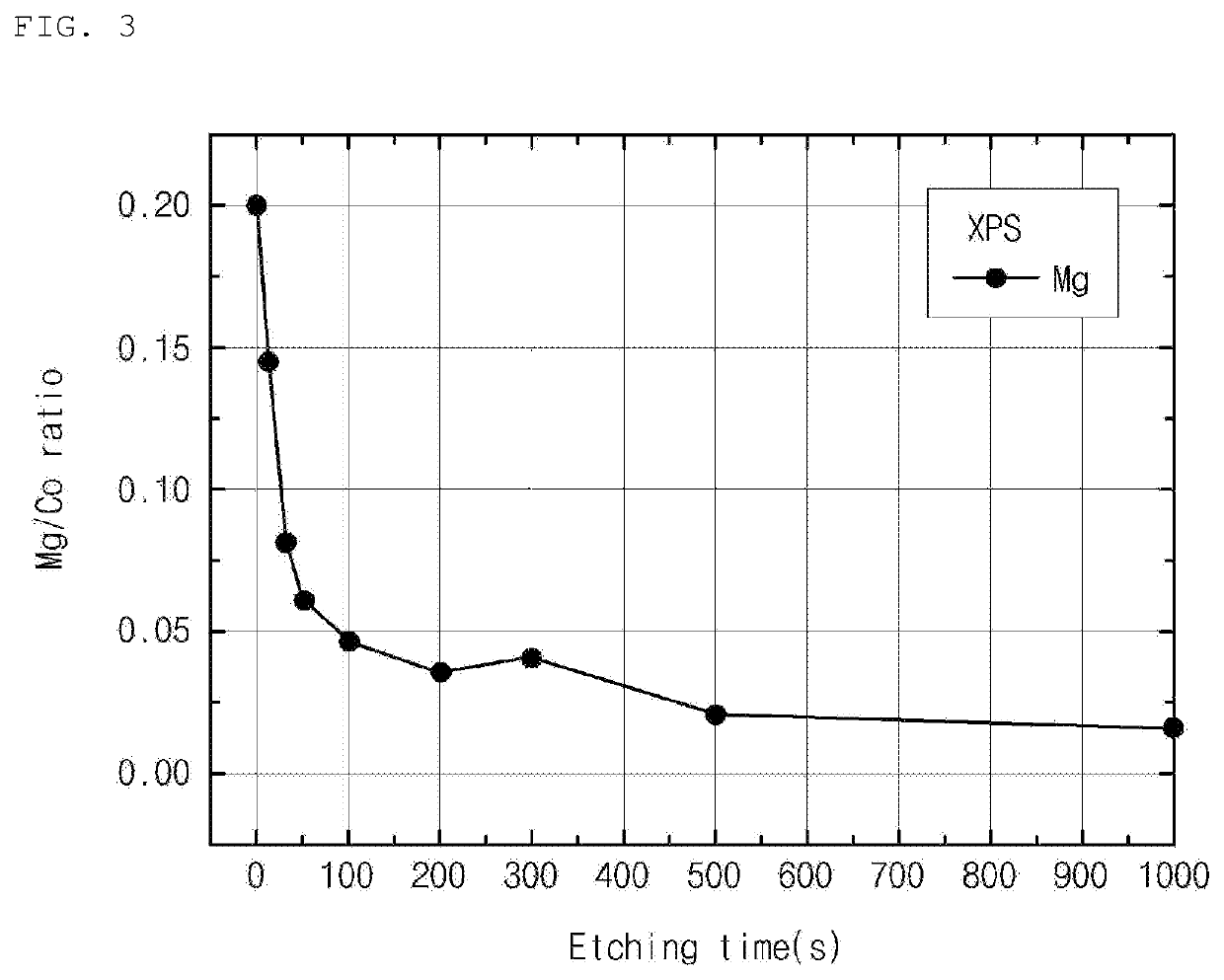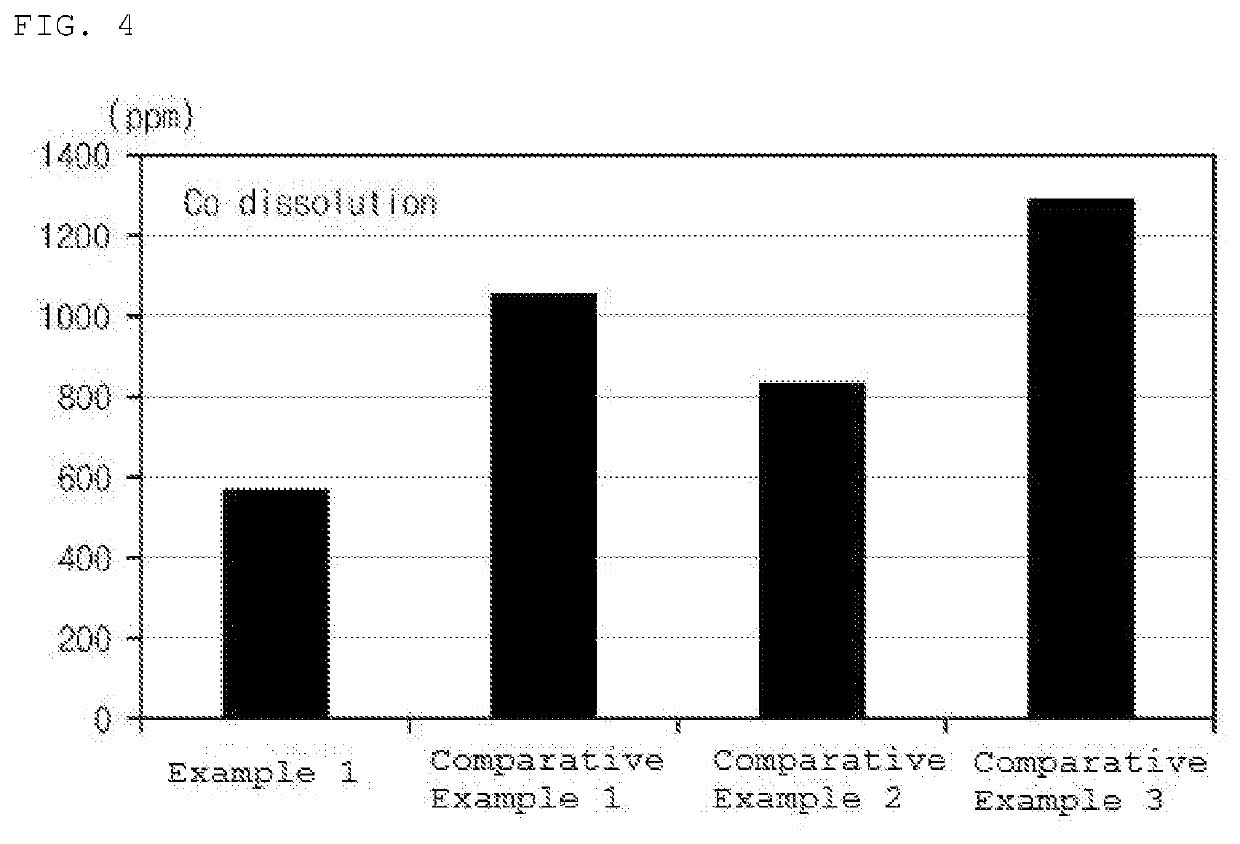Positive Electrode Active Material for Secondary Battery, Method for Preparing the Same, and Lithium Secondary Battery Including the Same
a secondary battery and active material technology, applied in the field of secondary batteries, can solve the problems of deterioration of the thermal characteristics of the battery, deterioration of the surface stability, and unstable structure, so as to improve the surface stability, prevent a structural change, and excellent structural stability
- Summary
- Abstract
- Description
- Claims
- Application Information
AI Technical Summary
Benefits of technology
Problems solved by technology
Method used
Image
Examples
example 1
[0100]In a batch type 5 L reactor set at 60° C., CoSO4 was mixed in water, and Al2(SO4)3 was further mixed in an amount of 0.3 wt % with respect to CoSO4 to prepare a 2 M concentration of precursor forming solution. The container containing the precursor forming solution was connected so as to be loaded into the reactor, and a 25% concentration of NaOH aqueous solution and a 15% concentration of NH4OH aqueous solution were additionally prepared and connected to the reactor, respectively. One liter of deionized water was added to a coprecipitation reactor (capacity 5 L), and then nitrogen gas was purged into the reactor at a rate of 2 liters / minute to remove dissolved oxygen in the water, and the inside of the reactor was set to a non-oxidizing atmosphere. Thereafter, a 10 ml of 25% NaOH aqueous solution was added, and the mixture was stirred at the temperature of 60° C. at a stirring speed of 1200 rpm to maintain pH 12.0. Then, a coprecipitation reaction was performed for 1440 minut...
example 2
[0103]A positive electrode active material was prepared by the same method as Example 1 except that MgSO4 was used as a doping raw material in the precursor doping instead of Al2(SO4)3 to prepare a 4,000 ppm Mg-doped Co3O4 precursor, 0.3 parts by weight of MgO was used instead of Al2(OH)3 in the second heat treatment, and the second heat treatment was performed for about 5 hours at 850° C. to prepare the positive electrode active material the surface of which was additionally doped with Mg.
experimental example 1
Element M Content
[0107]The positive electrode active materials prepared in Examples 1 and 2 were measured by ICP to measure the total contents of the doping elements included in the positive electrode active materials, and the results are shown in Table 1.
[0108]In addition, the positive electrode active materials prepared in Examples 1 and 2 were subjected to XPC analysis to measure the ratio of doping elements M and Co through a depth profile, and the results are shown in FIG. 2 (Example 1) and FIG. 3 (Example 2), respectively.
TABLE 2Total content of dopingelement M(ppm)Example 15,000Example 26,000
[0109]Referring to Table 1 and FIGS. 2 and 3, it can be seen that the positive electrode active materials of Examples 1 and 2 were doped with a doping element Al or Mg in high contents of 5,000 ppm and 6,000 ppm, respectively, exhibits higher contents on the surface side of the particle, and shows a concentration gradient in which the concentration of the doping element is gradually decre...
PUM
| Property | Measurement | Unit |
|---|---|---|
| molar ratio | aaaaa | aaaaa |
| voltage | aaaaa | aaaaa |
| pH | aaaaa | aaaaa |
Abstract
Description
Claims
Application Information
 Login to View More
Login to View More - R&D
- Intellectual Property
- Life Sciences
- Materials
- Tech Scout
- Unparalleled Data Quality
- Higher Quality Content
- 60% Fewer Hallucinations
Browse by: Latest US Patents, China's latest patents, Technical Efficacy Thesaurus, Application Domain, Technology Topic, Popular Technical Reports.
© 2025 PatSnap. All rights reserved.Legal|Privacy policy|Modern Slavery Act Transparency Statement|Sitemap|About US| Contact US: help@patsnap.com



